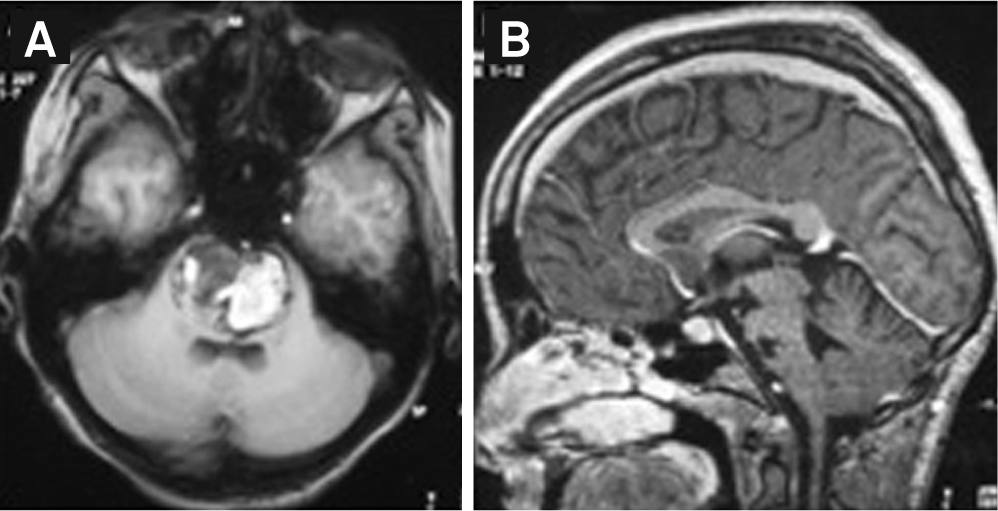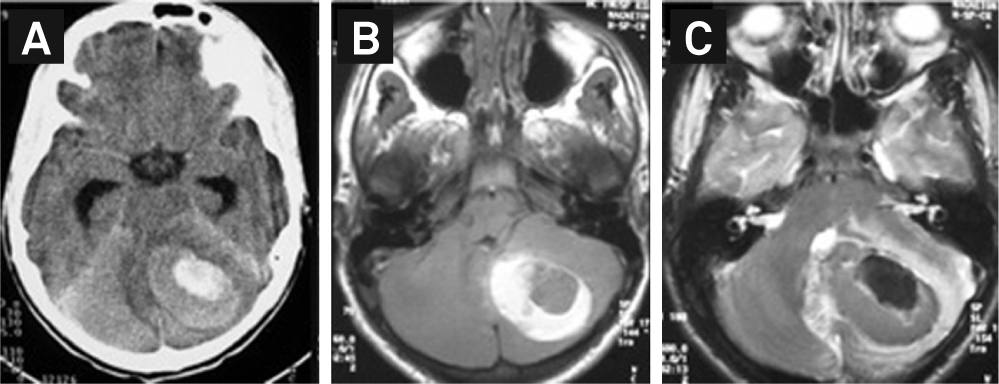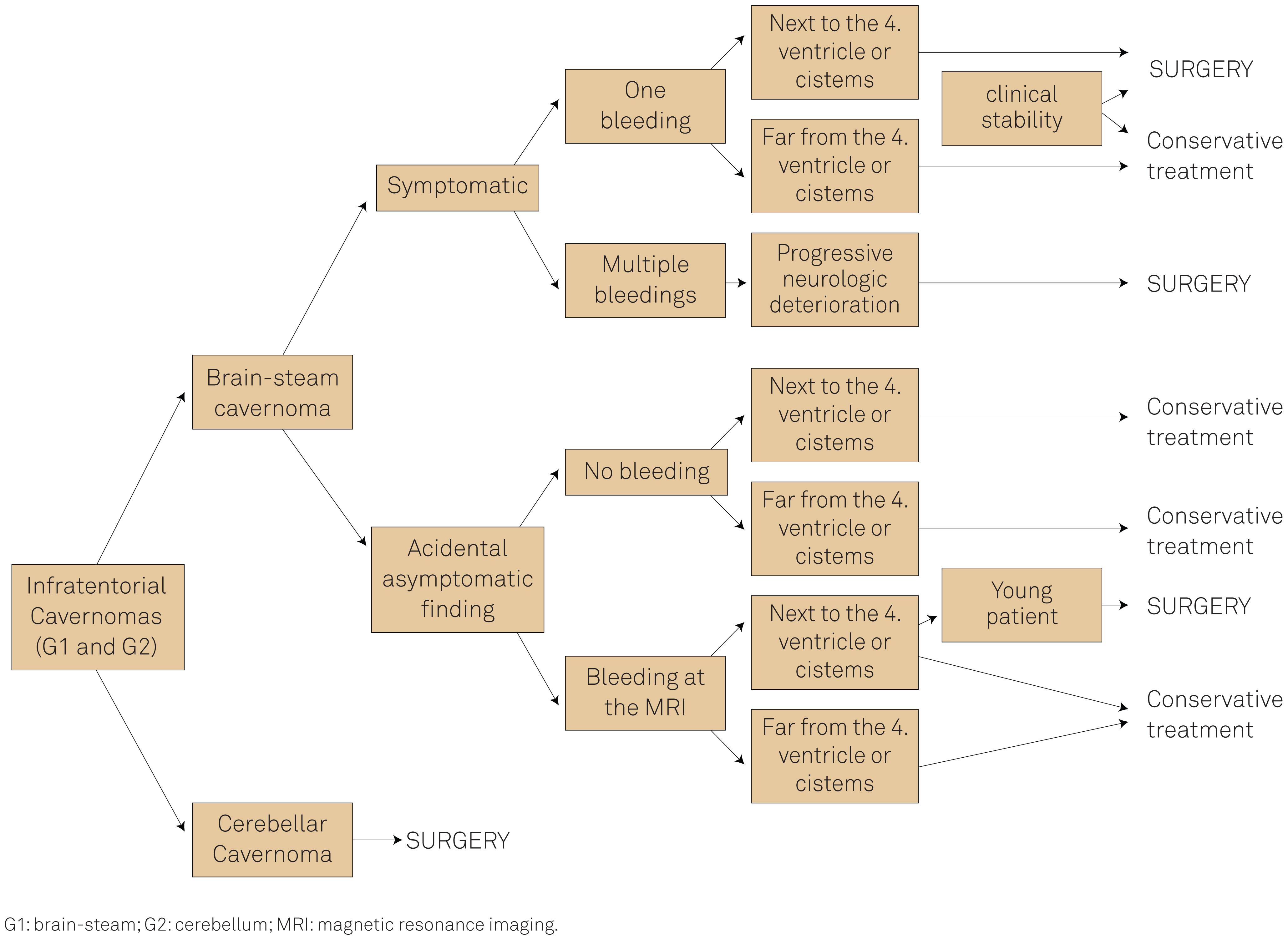Objectives:
To determine the clinical presentation and treatment outcome of pediatric intracranial cavernous malformation (CM) in a single-centered institution.
Methods:
Clinical data review of 30 patients under 18 years-old who had undergone surgery for cavernous malformation from January 1993 to December 2011.
Results:
The Study Group included 18 males and 12 females (mean age: 8.7 years-old). Symptoms at presentation were seizures (16/30, 53.3%), headache (15/30, 50.0%), and focal neurological deficits (11/30, 36.6%). Multiple cavernous malformations were found in 5/30 (16.6%). According to location, patients were classified in groups: (G1) brain-steam in 5/30 (16.6%), (G2) cerebellum in 2/30 (6.6%), (G3) supratentorial associated with seizures in 16/30 (53.3%), and (G4) supratentorial without seizures in 7/30 (23.3%). Surgical resection was performed in 26 out of 30 (86.6%) patients. The mean follow-up period was 4.1 years. Of 15 children followed-up with preoperative seizures, all were rendered seizure-free after surgery.
Conclusions:
For symptomatic solitary cavernous malformation, the treatment of choice is complete microsurgical excision preceded by careful anatomical and functional evaluation. For multiple cavernous malformation or asymptomatic patients, the treatment modalities must be cautiously considered.
hemangioma; cavernous; seizure; brain tumor





